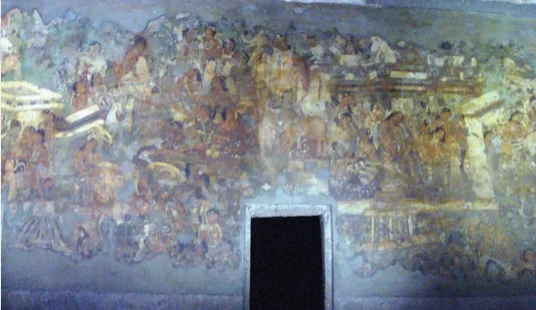![]() 19 Jun 2024
19 Jun 2024
Post-Mauryan Art & Architecture in ancient India saw a diverse evolution. From the iconic Great Stupa at Sanchi to the rock-cut marvels of Udayagiri, it embraced Buddhism, Jainism, and regional influences. Pillars, caves, and sculptures reflected a rich tapestry of cultural expressions, marking a dynamic era.
Time Period: This painting on the back wall of the interior hall before the shrine-antechamber in Cave No. 1 at Ajanta dates back to the late fifth century CE.


The theme of Mara Vijaya has been painted in the caves of Ajanta.

The image of Maheshmurti at Elephanta dates back to the early sixth century CE.

Anantha from Ananthapadmanabh Temple, Kasarghod.

| Must Read | |
| Current Affairs | Editorial Analysis |
| Upsc Notes | Upsc Blogs |
| NCERT Notes | Free Main Answer Writing |
The Post-Mauryan period in India witnessed a fascinating evolution in art and architecture. During this era, artistic styles and architectural techniques evolved, blending indigenous traditions with foreign influences, particularly from the Hellenistic world and Central Asia.
<div class="new-fform">
</div>